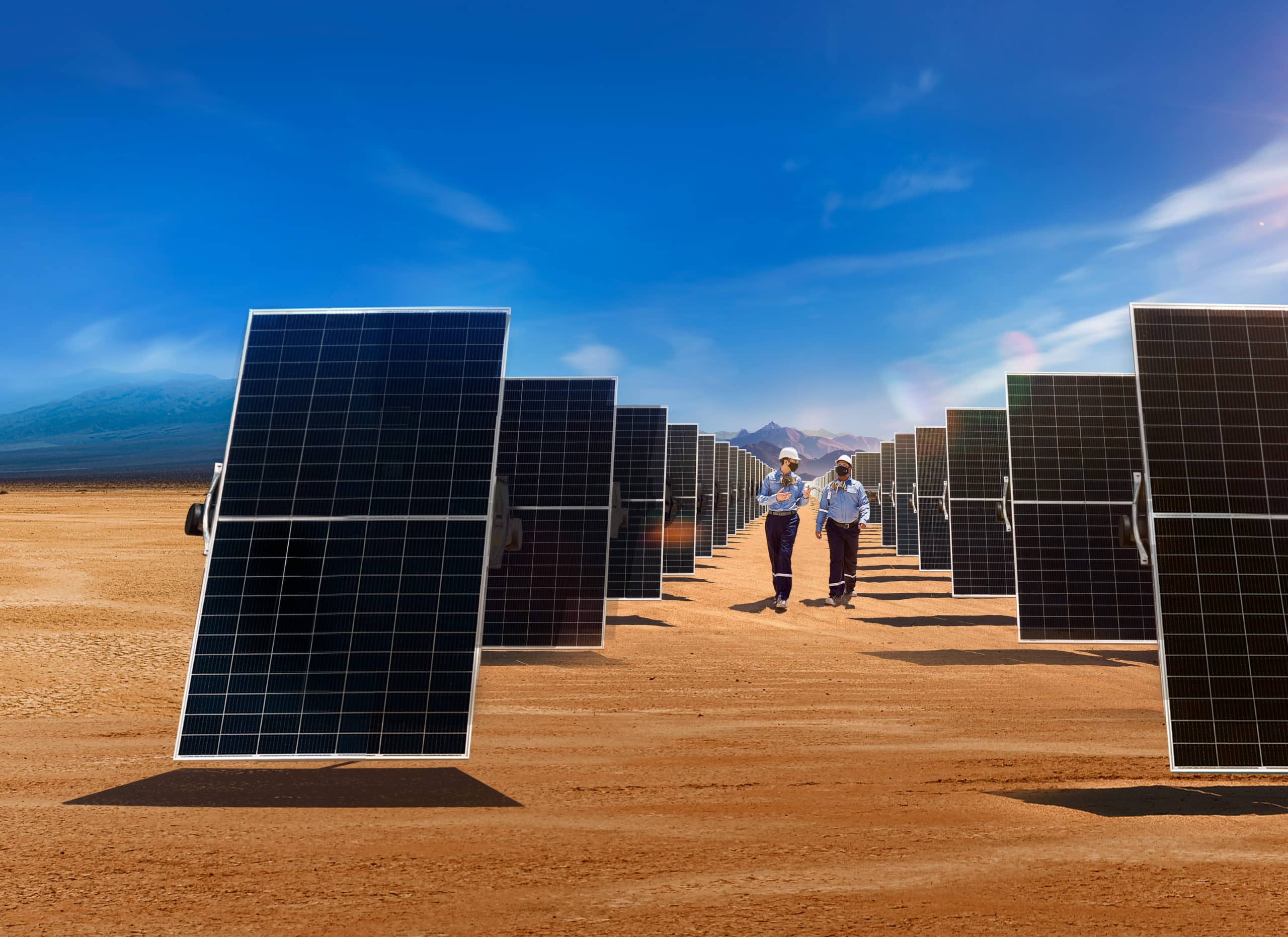One of the first words that spring to mind when people think of Africa is ‘sun’. No wonder. Africa is blessed with more sunshine than any other continent on earth.
The future, however, could be much brighter. That’s because the sun is set to become one of the biggest energy sources for the world. The power of the sun is indisputable. If we could harvest just one day of the sun’s energy, it would power the earth for a year.
And Africa is the solar power center of the world. According to the International Energy Agency (IEA), the continent is home to 60% of the best solar resources globally, but houses only 1% of installed solar PV capacity.
The African Development Bank has published estimates suggesting Africa has a potential capacity of 10TW of solar power. But it’s not just the sun. The IEA estimates the sub-Saharan region of Africa alone has 1,300GW wind energy potential and the continent has the capacity to produce 5,000 megatonnes of hydrogen per year.
Despite the wealth of resources at Africa’s disposal, almost 570 million people on the continent live without power. So how does Africa realize its untapped potential to help fuel the continent’s – and the earth’s – future energy needs?
Loading...
The benefits of achieving that goal are enormous. Renewable energy offers Africa a central role in the new model for cleaner industrialization and economic growth. Investing in renewable energy reduces the continent’s dependence on fossil fuel imports, ensuring a more secure and stable energy supply for economic activities.
As renewable energy technologies like solar and wind become increasingly cost-competitive, they help to lower energy costs and stimulate economic competitiveness. For perspective, in 2006 the cost of a kilowatt hour of solar energy was over$2. Today it is less than two cents.
The transition to renewables also presents a vast opportunity for job creation, particularly in manufacturing, installation, operation, and maintenance of renewable energy infrastructure, benefiting the economy and local communities.
But while the fruits of a successful transition are clear, the question remains, how does Africa get there?
One of the clouds casting a shadow over Africa’s sunny future is the lack of available finance. In its World Energy Transitions Outlook 2023 report, the International Renewable Energy Agency noted the widening investment gap between the Global North and South, pointing out that Africa accounted for only 1% of additional renewable energy capacity in 2022.
That message was reinforced in June by COP28 President-Designate and Masdar Chairman, Dr Sultan Al Jaber at a roundtable discussion at the Summit for a New Global Financing Pact in Paris, when he remarked: “Climate finance is nowhere near available enough, accessible enough and affordable enough – especially for countries in the Global South.”
To appreciate the scale of the issue, it’s worth noting that clean energy investment in Africa represents only 2% of the global total. According to the IEA, to achieve its energy and climate goals, Africa would need investment of $190 billion each year from 2026 to 2030, with two-thirds going to clean energy. That would take the share of energy investment in Africa’s GDP to 6.1% in the 2026-30 period, but Africa’s energy investment would still be only around 5% of the global total.
The IEA has called on multilateral development banks to make increasing financial flows to Africa “an absolute priority”, arguing the banks should increase concessional finance to Africa and use it more strategically “to better leverage private capital. This includes domestic financial markets, which need to more than double in size by the second-half of this decade”. It conceded, however, that high debt burdens remain a challenge to investments.
As a nation, the UAE has sought to raise public and private sector funds to invest in the development of Africa’s renewable energy sector with the Etihad 7 initiative, which has set a target of 20GW of capacity to supply 100 million people across the continent with clean electricity by 2035.
The UAE’s flagship renewable energy company, Masdar, is heavily involved in the initiative, with agreements for projects that have a combined generation capacity of 7GW in Uganda, Angola, Zambia and Tanzania.
A first mover in pioneering energy projects in Africa for over a decade, Masdar, through its Infinity Power platform, holds more than 2GW of clean energy projects across the continent including Egypt, Morocco, Senegal, Mauritania, and South Africa. Masdar has already deployed $2 billion of capital to Africa and is on track to deliver 10GW of renewable energy projects across the continent by 2030.
In September this year, Masdar announced it was mobilizing $10 billion of investment to accelerate 10GW of clean energy projects in Africa, as part of the UAE’s investment initiative announced at Africa Climate Week.
Masdar’s Chief Executive Officer, Mohamed Jameel Al Ramahi, said: “As the largest renewable energy company in Africa, it is fitting that Masdar, with its Infinity Power platform, should take this bold step forward which will unlock much needed investment for the energy transition. Africa is a key strategic market for Masdar and we are proud of our history of clean energy projects there.”
Positive actions like these that help accelerate the delivery of finance to the development of clean energy projects in Africa are needed more than ever if the continent is to achieve its full potential as one of the world’s leading renewable energy providers.
Africa deserves a future where its name is synonymous with words like ‘energy’ and ‘power’. The UAE and Masdar are doing their part to make it happen.
Loading...
